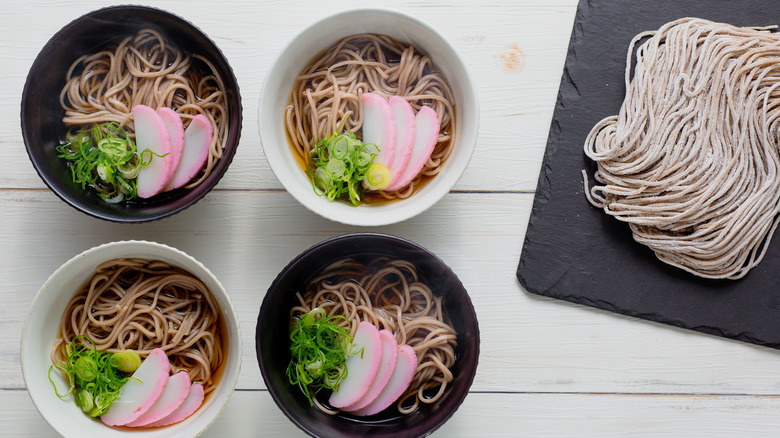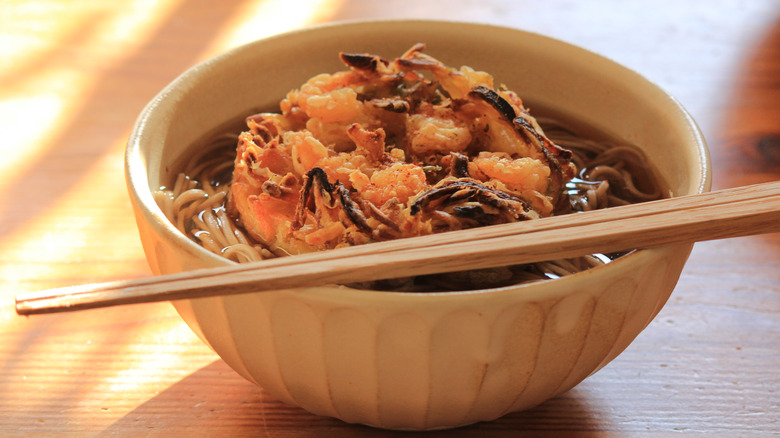Soba Is The Japanese New Year's Tradition You're Missing
The New Year, a holiday also known as Oshōgatsu, is a big deal in the island nation of Japan. Per Encyclopedia Britannica, it's officially observed January 1 through January 3, but the celebration can unofficially last much longer, and the revelry is chock full of tradition. Homes are spruced up, local shrines are visited, and presents are exchanged. People even wake up early on New Year's Day to watch the sunrise.
Asia Society explains this multiday event is Japan's most important traditional holiday, even if it's not as ardently observed anymore. Still, lots of work gets put into appearing presentable and entering the new year free of baggage like debts. People also prepare plenty of food ahead of time, so as to not bother the New Year god with the noises of cooking as January begins. Included in the New Year's dishes traditionally eaten are dried persimmons, herring roe, oranges, rice cakes with sweet bean paste, rolled kelp, shrimp, and sweet black beans. One other item present, enjoyed while listening to the ringing of the bells on New Year's Eve, is toshikoshi soba.
Toshikoshi soba is filled with meaning
Their name translates to "year-crossing noodles," according to Asia Society. They're toshikoshi soba, a dish made of buckwheat noodles. Via the Los Angeles Times, these noodles are thin and earthy with a sweet taste and nutty smell, eaten cold with a plain sauce for dipping or enjoyed hot in a soy broth. They pair well with a variety of other foods, such as sausage balls, flavored eggs, or deep-fried fish. The best way to eat soba noodles is quickly, so as not to let them spoil and lose their al dente texture. Toshikoshi soba is thought to bring prosperity to the eater since its noodles' length apparently equates to long life.
Tokyo Weekender states this tradition dates back to the mid-Edo Period (1603 – 1867) in the city of Osaka. Evidently, it's not just the length of toshikoshi soba that matters, either, since the ease with which they're cut also represents the severing of ties with misfortune as the new year begins. Additionally, goldsmiths once used soba flour to pick up leftover gold remnants, so soba symbolizes material wealth, too. Even now, people will line up out the door at noodle shops to recreate this culinary tradition on New Year's.
It can be good to take out the old and bring in the new when the calendar resets, but some customs are worth keeping around!

